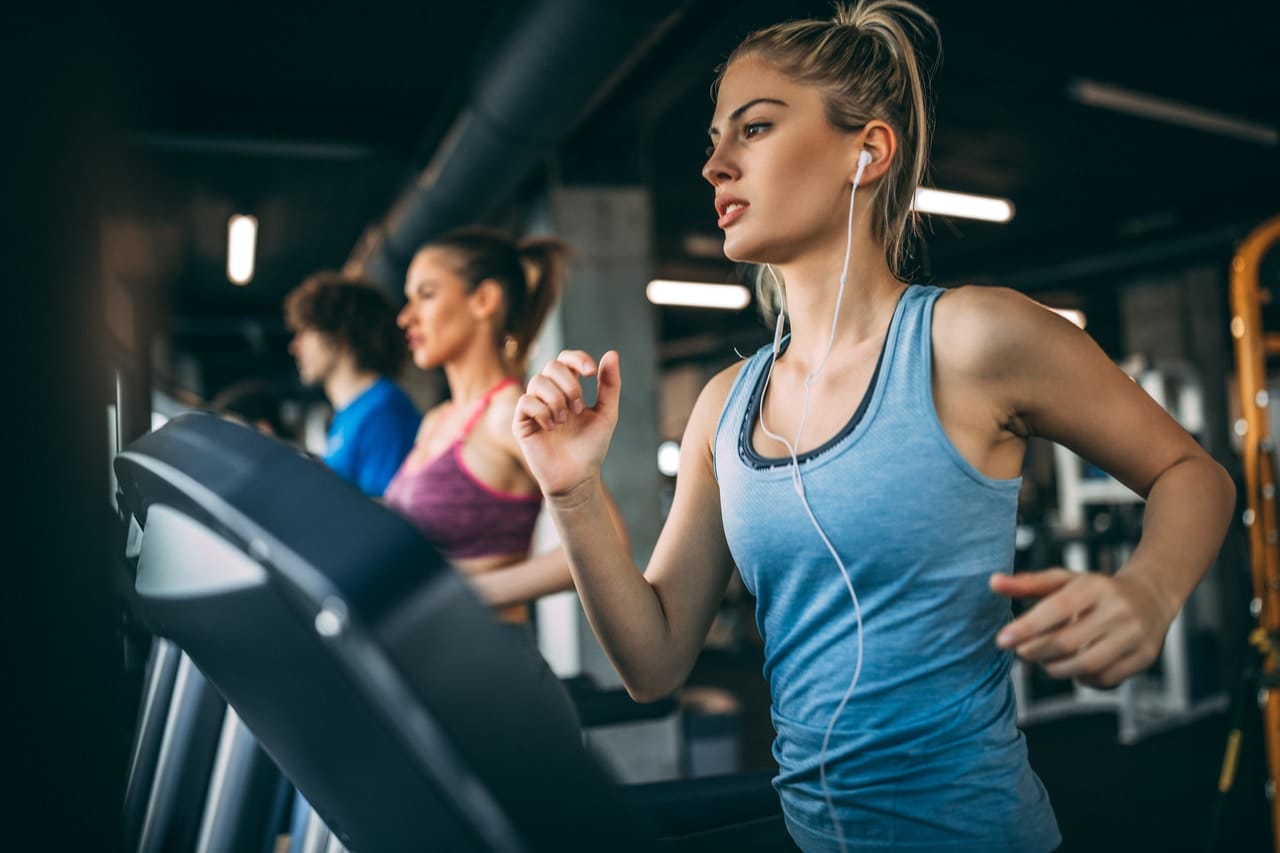Engaging in regular exercise is essential for maintaining physical health, but it also comes with risks such as injuries and overexertion. Understanding how to protect your body through proper warm-up and cool-down techniques, selecting appropriate equipment, and recognizing the signs of overexertion can significantly enhance your workout experience. This article provides practical insights and actionable strategies to help you exercise safely and effectively, ensuring you can achieve your fitness goals without compromising your well-being.
In this article you will find:
Understanding Common Exercise Injuries and How to Prevent Them
Engaging in physical activity is crucial for maintaining a healthy lifestyle, but it comes with its own set of risks. Understanding the common exercise injuries that can occur during workouts is essential to ensuring a safe and effective fitness journey. By learning about these injuries and implementing preventive measures, you can protect your body and enhance your performance.
Common Types of Exercise Injuries
Exercise injuries can generally be categorized into two types: acute injuries and chronic injuries.
- Acute Injuries: These injuries occur suddenly during exercise. Common examples include:
- Sprains: Stretching or tearing of ligaments, often affecting ankles and knees.
- Strains: Stretching or tearing of muscles or tendons, typically found in the back, hamstrings, or shoulders.
- Fractures: Breaks in bones, which can happen during high-impact activities.
- Chronic Injuries: These injuries develop gradually over time, often due to repetitive motions. Examples include:
- Tendinitis: Inflammation of tendons, commonly affecting the elbow (tennis elbow) or shoulder.
- Plantar Fasciitis: Inflammation of the plantar fascia, leading to heel pain, often seen in runners.
- Shin Splints: Pain along the shin bone due to overuse, particularly common in runners and dancers.
Preventive Measures to Avoid Injuries
While injuries can happen, many can be prevented with proper precautions. Here are some essential strategies to minimize your risk:
- Warm Up Properly: A dynamic warm-up increases blood flow to muscles and prepares them for exercise. Include activities like light jogging, leg swings, and arm circles to get your body ready.
- Use Correct Form: Ensuring proper technique during exercises is vital. If you’re unsure about your form, consider working with a certified personal trainer or watching instructional videos.
- Gradually Increase Intensity: Avoid jumping into high-intensity workouts too quickly. Gradually increase the duration and intensity of your workouts to allow your body to adapt.
- Listen to Your Body: Pay attention to pain signals. If you feel discomfort during an exercise, stop and assess the situation. Pushing through pain can lead to serious injuries.
- Cross-Train: Incorporating a variety of exercises into your routine can help prevent overuse injuries. For example, alternate between cardio, strength training, and flexibility workouts.
When to Seek Professional Help
If you experience persistent pain or suspect a serious injury, seeking medical advice is crucial. A healthcare professional can provide a proper diagnosis and recommend treatment options. Early intervention can prevent further complications and help you return to your fitness routine more quickly.
For more information on exercise-related injuries and preventive strategies, consider visiting Better Health Channel, which offers valuable insights on maintaining your health while exercising.
The Importance of Proper Warm-Up and Cool-Down Techniques
In the realm of physical fitness, the significance of warm-up and cool-down techniques cannot be overstated. These practices are essential for preparing your body for exercise and aiding in recovery afterward. Incorporating effective warm-up and cool-down routines into your fitness regimen can enhance performance, reduce the risk of injury, and promote overall health.
Why Warm-Up Matters
A proper warm-up serves multiple purposes, all of which contribute to a safer and more effective workout. Here’s why warming up is crucial:
- Increases Blood Flow: Warming up gradually elevates your heart rate, improving blood circulation to your muscles. This increased blood flow helps deliver essential nutrients and oxygen, preparing your body for the demands of exercise.
- Enhances Flexibility: Dynamic stretching during your warm-up can enhance flexibility and range of motion. This increased mobility allows for better performance and decreases the likelihood of strains and sprains.
- Prepares Mentally: A warm-up provides a mental transition from daily activities to workout mode. It helps you focus on your goals and mentally prepares you for the challenges ahead.
Effective Warm-Up Techniques
To maximize the benefits of your warm-up, consider incorporating the following techniques:
- Dynamic Stretching: Engage in movements that mimic the exercises you plan to perform. Examples include arm circles, leg swings, and torso twists.
- Light Cardiovascular Activity: Start with 5 to 10 minutes of light cardio, such as brisk walking, jogging, or cycling, to gradually elevate your heart rate.
- Sport-Specific Drills: If you’re preparing for a specific sport, include drills that relate directly to that activity to enhance your readiness.
The Role of Cool-Down in Recovery
Just as warming up prepares your body for exercise, cooling down is vital for recovery. A proper cool-down aids in transitioning your body back to a resting state and offers several benefits:
- Reduces Muscle Soreness: Gradually lowering your heart rate and stretching your muscles can help reduce post-exercise soreness and stiffness, allowing for faster recovery.
- Prevents Dizziness: A sudden stop to vigorous exercise can cause dizziness or fainting. A cool-down allows your body to adjust gradually, promoting better blood flow and stability.
- Improves Flexibility: Incorporating static stretching during your cool-down can enhance flexibility and reduce muscle tension, aiding in long-term mobility.
Effective Cool-Down Techniques
To effectively cool down after your workout, consider these techniques:
- Gentle Cardio: Spend 5 to 10 minutes engaging in low-intensity activities, such as walking or slow cycling, to gradually decrease your heart rate.
- Static Stretching: Focus on major muscle groups you used during your workout. Hold each stretch for 15 to 30 seconds to maximize benefits.
- Hydration and Nutrition: Rehydrate and refuel your body with a balanced snack post-workout to aid in recovery and replenish lost nutrients.
By incorporating proper warm-up and cool-down techniques into your fitness routine, you set the stage for a successful workout while minimizing the risk of injuries. For further insights on enhancing your exercise experience, check out NIA’s guide on exercise types, which offers valuable information on effective fitness practices.
Choosing the Right Equipment for Safe Workouts
When it comes to exercising safely and effectively, selecting the right equipment is paramount. The right gear not only enhances your performance but also plays a crucial role in injury prevention. With an overwhelming variety of fitness equipment available, understanding what to choose can make all the difference in your workout experience.
Understanding Your Fitness Goals
The first step in choosing the right equipment is to clearly define your fitness goals. Are you looking to build strength, improve cardiovascular health, or enhance flexibility? Your specific objectives will influence your equipment choices. Here’s how different goals align with the appropriate gear:
- Strength Training: If your focus is on building muscle, consider investing in:
- Dumbbells: Versatile and suitable for a variety of exercises.
- Resistance Bands: Great for strength training and rehabilitation.
- Kettlebells: Excellent for dynamic movements that build strength and endurance.
- Cardiovascular Fitness: For those aiming to enhance endurance, effective equipment includes:
- Treadmills: Perfect for running or walking indoors.
- Stationary Bikes: Ideal for low-impact cardio workouts.
- Jump Ropes: An excellent tool for high-intensity interval training.
- Flexibility and Balance: Equipment to support flexibility training includes:
- Yoga Mats: Essential for practicing yoga and stretching safely.
- Foam Rollers: Great for muscle recovery and improving flexibility.
- Balance Boards: Useful for enhancing stability and core strength.
Ensuring Safety Features
When selecting fitness equipment, safety features should be a top priority. Here are key aspects to consider:
- Stability: Ensure that equipment, especially larger items like treadmills and weight benches, has a solid base to prevent tipping or sliding during use.
- Adjustability: Look for equipment that can be adjusted to fit your body size and shape. This is particularly important for weight machines and benches.
- Non-Slip Surfaces: Choose items with grips or non-slip surfaces to prevent accidents during workouts.
Quality vs. Cost
While it can be tempting to opt for cheaper options, investing in high-quality equipment often pays off in the long run. Here’s why:
- Durability: Higher-quality equipment tends to last longer and withstand rigorous use, making it a better investment.
- Performance: Quality gear typically performs better, providing a smoother and more effective workout experience.
- Warranty and Support: Reputable brands often offer warranties and customer support, giving you peace of mind with your purchase.
Testing Before Buying
Whenever possible, test equipment before making a purchase. Many sporting goods stores have demo areas where you can try out items like treadmills, stationary bikes, or free weights. Pay attention to how the equipment feels, ensuring it meets your comfort and safety needs.
For additional guidance on selecting fitness gear, consider visiting Better Health Channel, which provides insights on the benefits of various exercise types and equipment.
Listening to Your Body: Recognizing Signs of Overexertion
One of the most vital aspects of any fitness journey is the ability to listen to your body. Recognizing the signs of overexertion can be the difference between achieving your goals and suffering from injuries or burnout. Understanding these signs will empower you to make informed decisions about your workouts, ensuring they remain safe and effective.
What is Overexertion?
Overexertion occurs when you push your body beyond its physical limits. This can happen due to excessive intensity, duration, or frequency of exercise without adequate rest and recovery. While challenging yourself is essential for progress, it’s crucial to find a balance to prevent adverse effects.
Common Signs of Overexertion
Being aware of the symptoms of overexertion allows you to take necessary actions before serious issues arise. Here are some common signs to watch for:
- Excessive Fatigue: Feeling tired beyond the usual post-workout fatigue can indicate that your body is struggling to recover.
- Shortness of Breath: If you find yourself excessively breathless or unable to catch your breath during moderate activity, it may be a sign that you’re pushing too hard.
- Persistent Muscle Soreness: While some soreness is normal, experiencing prolonged or intense soreness can suggest that your muscles are not recovering properly.
- Dizziness or Lightheadedness: Feeling faint during or after workouts is a clear indication that your body may be overworked or dehydrated.
- Increased Heart Rate: An unusually high heart rate that doesn’t return to normal after exercise can be a sign of overexertion.
Recognizing Mental Indicators
Overexertion isn’t just physical; it can also manifest in mental and emotional ways. Pay attention to these signs:
- Decreased Motivation: A sudden lack of enthusiasm for workouts can indicate that your body needs a break.
- Irritability: Increased mood swings or irritability can be linked to physical stress and fatigue.
- Difficulty Concentrating: If you find it hard to focus during your workouts or daily tasks, it may be a sign of mental fatigue from overtraining.
Strategies to Prevent Overexertion
To ensure that you remain within your limits and avoid overexertion, consider these practical strategies:
- Establish a Balanced Routine: Create a workout schedule that includes a mix of cardio, strength training, and rest days. This balance allows for recovery and prevents burnout.
- Monitor Your Intensity: Use tools like heart rate monitors to keep track of your exertion levels and adjust your workouts accordingly.
- Stay Hydrated: Dehydration can exacerbate fatigue and impair performance, so make sure to drink water before, during, and after exercise.
- Prioritize Recovery: Incorporate rest days and consider practices like yoga or stretching to promote recovery and flexibility.
When to Seek Professional Advice
If you consistently experience signs of overexertion despite making adjustments to your routine, it may be time to consult a healthcare professional. They can help identify underlying issues and recommend personalized strategies to enhance your fitness journey safely.
For further insights on understanding your body and optimizing your exercise routine, consider visiting NIA’s guide on exercise types, which offers valuable information on maintaining health through various physical activities.
Incorporating proper warm-up and cool-down techniques is crucial for enhancing performance and reducing injury risk during workouts. A dynamic warm-up increases blood flow, flexibility, and mental readiness, while a proper cool-down aids recovery by reducing muscle soreness and preventing dizziness. Key strategies include engaging in light cardiovascular activity, dynamic stretching before workouts, and static stretching afterward.
Choosing the right fitness equipment tailored to your specific goals—whether for strength training, cardiovascular fitness, or flexibility—is vital for safe workouts. Ensure that your equipment offers stability, adjustability, and safety features. Additionally, actively listen to your body to recognize signs of overexertion, such as excessive fatigue, shortness of breath, and persistent soreness, and prioritize recovery through rest and hydration to maintain optimal performance.




